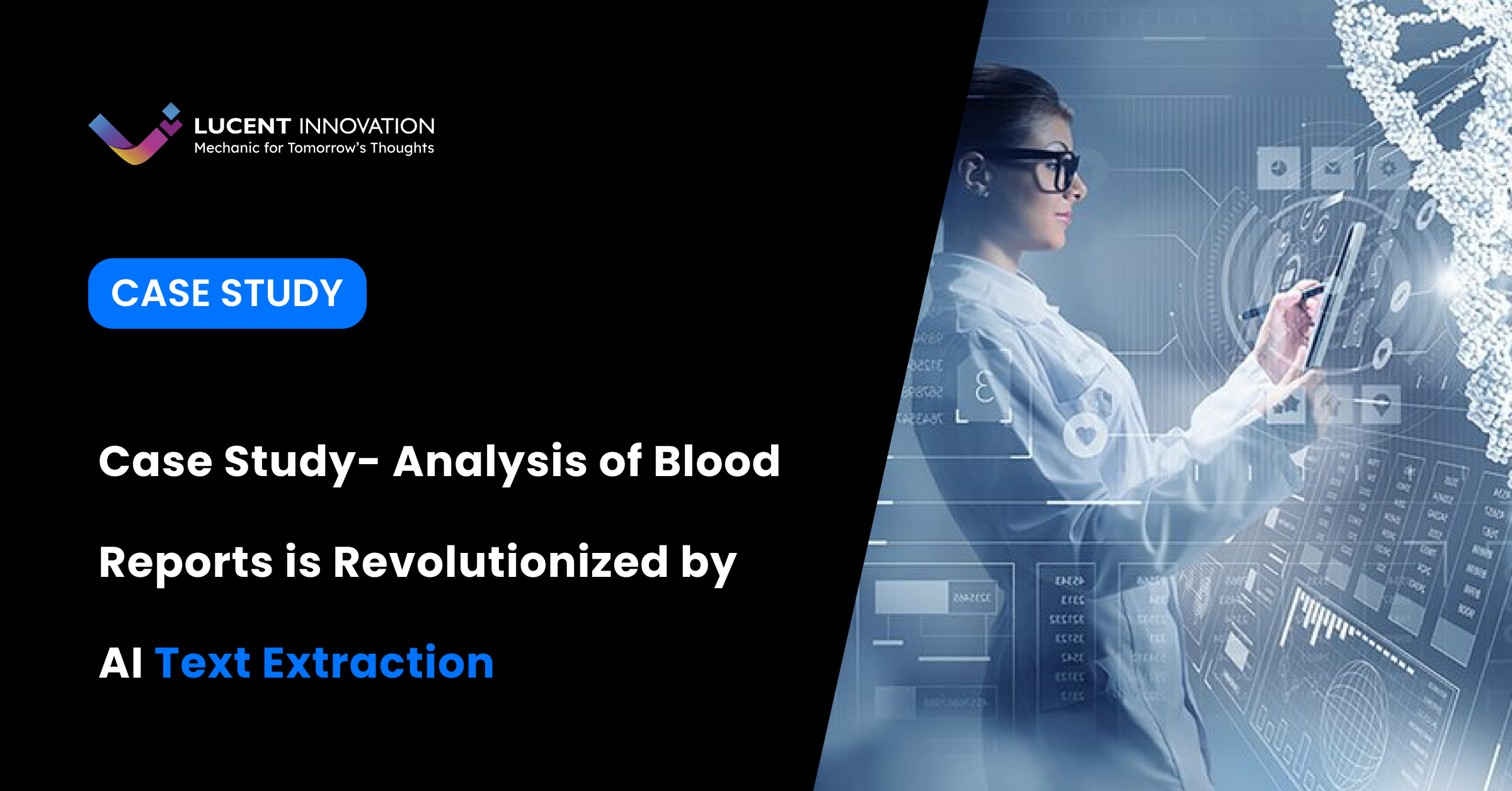
Case Study of Analysis of Blood Reports by AI Text Extraction
Share




Project Overview
Managing various blood report forms presents a big problem for both patients and hospitals. The layout, terminology, and data presentation of these reports frequently vary which makes it challenging to effectively extract the relevant details. Healthcare professionals therefore encounter difficulties carrying out in-depth studies and coming to wise treatment selections. Errors can occur during the laborious human process of gathering and standardizing data from these reports, which could result in disparities in medical records. Patient outcomes may be compromised by this inefficient and non-standard data management, which might delay the timely provision of care. Thus, creative solutions are urgently required to improve the overall standard of healthcare delivery and accelerate the processing of blood results.
In this project, computer vision is essential to improving the precision and effectiveness of blood report analysis. A branch of artificial intelligence that educates and empowers computers to fully understand the visual environment is computer vision. Computers can precisely recognize, classify, and respond to things through digital photos and deep-learning models.

Here are some applications for computer vision:
-
Image Preprocessing: Computer vision techniques are used to preprocess the images of blood reports before text extraction can begin. To guarantee the best quality for text extraction, this preprocessing may include operations like noise reduction, picture enhancement, and bias correction.
-
Text Detection: To find and recognize textual elements in the blood report photos, computer vision algorithms are used. This involves recognizing areas of interest (ROIs) containing text, irrespective of changes in font type, size, or orientation.
-
Optical Character Recognition (OCR): OCR methods are used to transform visual text into a format readable by machines after text regions are recognized. The text is analyzed using computer vision algorithms, which identify individual characters and turn them into digital text data that the system can process and understand.
-
Layout Analysis: The arrangement and composition of blood report images are also examined using computer vision techniques. This involves finding several report sections, including test findings, medical observations, and patient information. A better understanding of the layout provides more precise data extraction and interpretation.
-
Quality Assurance: The collected text data is subjected to quality tests using computer vision algorithms. This includes verifying the precision of OCR findings, identifying and fixing any erroneous character interpretations, and guaranteeing data extraction uniformity across various report formats.
The online application can effectively extract and analyze textual information from blood report photos using computer vision in these important domains. This can streamline the analysis process and provide well-informed treatment decisions for both patients and healthcare professionals.
Challenges
-
Variations in layout and organization make it difficult to integrate data from various blood report formats, which makes data aggregation across several sources more difficult.
-
Manually extracting data from blood reports takes a lot of time and is subject to mistakes, which increases the chance of transcribing or data entry errors.
-
Lack of access to historical health data makes it more difficult to make educated treatment decisions, which delays diagnosis and care continuity.
-
Healthcare workflows and patient safety are negatively impacted by paper-based report management, which is inefficient and raises the possibility of record loss or misplacement.
Requirement
-
Provide a mechanism for analyzing blood reports effectively.
-
Ensure data accuracy by using reliable extraction techniques.
-
Create an intuitive online interface to facilitate data visualization.
-
Switch to an electronic report management system for better accessibility.
Solutions Provided
-
Developed a Python backend to extract raw data from PDF and picture files using FastAPI and OpenCV-python.
-
AI algorithms were put into practice to provide a unified representation for the gathered data. AI algorithms performed a significant portion of the evaluation of the acquired text data. The data is standardized, cleaned, and organized by these algorithms into a unified format that makes it simple to analyze the data for different kinds of reports.
-
ReactJS frontend paired with the Material UI. ReactJS, a JavaScript tool, enables an intuitive online interface for communication between doctors and patients. Built a user-friendly web interface using Material Ui and ReactJS.
-
Used MongoDB as a database to handle and keep track of patient information. The selection of the NoSQL database MongoDB was based on its flexibility in managing and archiving the diverse array of data collected from blood reports.
-
This data may include historical data that can be used for trend analysis in addition to extracted test results.
Tools and Technology Used
- Languages used for programming: Python and Javascript (ReactJS)
- Libraries: Material Ui, FastAPI, and OpenCV-python
- Database: MongoDB
- Development Tools: Mongo Compass, Mongo Atlas, and VS Code
Benefits Gained
-
Improved accuracy when analyzing data from blood reports.
-
Enhanced quality of data by automated extraction and standardization.
-
Faster access to past medical records leads to improved patient treatment.
-
Paperless report management simplifies process management.
Future Scalability
-
Integrate with hospital information systems to provide smooth data flow.
-
Increase the capabilities so that other medical reports can be evaluated.
-
Use machine learning methods to identify potential health risks.
-
Develop mobile applications that improve patient and facility accessibility.
This case study shows how AI-powered text extraction has the potential to totally transform healthcare data management. This web platform allows data visualization and standardizes blood report formats, providing doctors and patients with the knowledge they need to improve healthcare outcomes.
Share




Looking for
Development
Solutions?
Top Articles
Yaani PatelJuly 22, 2022
Ashish Kasama & Vedika PandeySep 14, 2022
Services
Web Development
Enterprise Development
Lucent Innovation, © 2024. All rights reserved.Privacy policy













